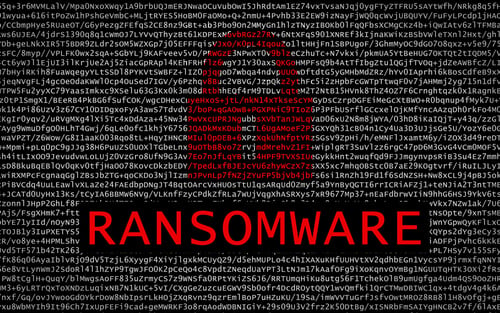Intelligent medical devices play a vital role in sustaining life and promoting health. Wearable technologies continuously monitor vital signs such as heart rate, while larger equipment like dialysis machines and ventilators operate tirelessly to support critical bodily functions.
Regrettably, cybersecurity is often an overlooked aspect in the development of many smart devices, and medical devices in particular. Being constantly connected to the internet, they are either protected by basic passwords or, in some cases, have no password protection at all.
This and many other vulnerabilities pose a significant risk, as they not only permit unauthorized access to individual devices but also enable hackers to infiltrate huge hospital networks and cause mass disruption through malicious software. A 2021 Cynerio report revealed a staggering 123% increase in ransomware attacks on healthcare facilities, resulting in more than 500 incidents and costs exceeding $21 billion.
In response, manufacturers are intensifying their cybersecurity efforts, incorporating advanced CI/CD workflows to safeguard medical devices from escalating attacks. New security solutions are now aiding healthcare organizations' IT teams in promptly resolving issues, even with devices from various manufacturers. These tools are equipped to interpret different rules, filters, and queries, enhancing the detection of vulnerabilities.
Let's examine common security challenges in connected healthcare equipment and discuss some effective protection strategies and recommendations.
Challenges in securing IoMT devices
The Internet of Medical Things (IoMT) is essentially a subset of the wider Internet of Things (IoT) concept. Whereas IoT encompasses a variety of devices such as wearables, industrial sensors, and smartphones, IoMT is dedicated exclusively to medical devices. Both systems rely on cloud storage and AI-driven communication for data exchange. IoMT advances this technology by assisting healthcare providers in evaluating, treating, diagnosing, and monitoring patient health conditions.
Cybercriminals often attack medical devices and networks to access highly sensitive information, including personal and protected health data. They often exploit this information by demanding ransom or selling it on the Dark Web.
Vulnerabilities in medical devices present significant risks, expanding the potential for breaches. Common security issues include:
• Poorly managed access controls
• Insufficient network segmentation
• Outdated system components
• Lack of timely security updates
• Excessive amounts of unencrypted data
• Open-source software with security flaws
In addition, the healthcare industry has recently seen an uptick in attacks targeting mobile apps and APIs.
When multiple devices are interconnected into one network, there is often a vulnerable point in this network—typically, a device with less sophisticated and secure software or firmware. Hackers can exploit such a device as an entry point, enabling them to navigate laterally across the entire network in search of valuable info. Various components—from specific gadgets, servers, and storage systems to web apps, cloud databases, firmware, and network services—can either strengthen the network's security or act as potential vulnerabilities in its defense system.
Often, manufacturers consider security as a secondary aspect, not an integral part of the design of medical devices. This absence of inherent cybersecurity features, along with the lack of audit logs, significantly increases the risks. Furthermore, issues related to human errors or oversights in this context can lead to potentially life-threatening situations.
Employing network segmentation, establishing strong authorization protocols, and using advanced traffic filtering techniques that cover all layers of the OSI model are essential to reduce risks linked to smart medical devices. The integration of AI technologies can further improve security, identifying potential threats more rapidly than conventional methods. Automating various IT operations with AI can also lead to considerable savings in operational costs and time.
Securing IoMT devices is particularly challenging due to their operational requirements. Many of these devices must operate continuously, 24/7, without interruptions. Consequently, implementing regular patches or updates, which would necessitate temporary shutdowns, is not only inconvenient but also carries financial implications and, more critically, can pose risks to human lives.
Expanding on the problems, devices from diverse manufacturers often operate on distinct schedules for maintenance and updates. This can disrupt the seamless functioning of other devices within the same network. Furthermore, if software compatibility is not standardized across all devices, it introduces an entirely new set of security vulnerabilities.
Following FDA and NIST cybersecurity guidelines
Some time ago, the FDA issued guidelines outlining design recommendations and considerations for medical devices, both pre- and post-market release. Regrettably, these recommendations are not consistently followed. Cybersecurity is paramount on the FDA's agenda and necessitates active involvement from all stakeholders, including device manufacturers, healthcare providers, and patients. It is crucial for everyone to collectively contribute to enhancing the security of IoMT devices to the fullest extent possible.
Establishing a comprehensive cybersecurity risk management strategy is an excellent way to avoid security incidents. This strategy should encompass both pre- and post-product launch phases. In simpler terms, security should be an integral aspect of the device's design process, serving as an inherent feature with full technical support. Security features and measures should persist throughout the device's entire lifecycle, from its inception to its eventual obsolescence.
Medical device manufacturers are subject to distinct guidelines at different stages of a product's lifecycle. Already during the design and development phase, they must adhere to directives emphasizing the necessity of a well-justified choice of security measures. This stage requires a detailed rationale for selecting specific security controls in the device's design.
Once a medical device is in use, manufacturers must follow a different set of guidelines focused on cybersecurity management. This approach includes establishing systems for effective management of security vulnerabilities.
Additionally, adhering to the cybersecurity framework provided by the U.S. National Institute of Standards and Technology (NIST) is essential. This involves a commitment to continuous monitoring and updating of security measures, ensuring the device remains safe and secure against evolving cyber threats.
Furthermore, it is important to ensure security practices align with HIPAA compliance requirements, including the protection of collected patient health information through administrative measures such as electronic signatures, automatic document generation, and physical safeguards like biometric scanners.
Internet of Medical Things security best practices
Let me share a set of fundamental principles which I believe are essential for reliable cyber protection within the Internet of Medical Things sphere. Following these guidelines is vital for ensuring the security, reliable operation, and integrity of IoMT devices and their interconnected networks.
Risk-based strategy
It is essential for manufacturers to understand their assets, pinpoint potential risks and vulnerabilities, and evaluate how these might compromise device operation or endanger patient health and safety. Assessing the probability of cyber threats and crafting strategies to reduce their impact is very important.
Full-scale security testing
Every device and system must undergo extensive testing to identify any vulnerabilities. Manufacturers are advised to perform various tests like penetration testing and vulnerability scanning to ensure the strength of their security measures.
Clear labeling
Labels on devices should clearly communicate their security features and any necessary safety precautions that patients need to be aware of. For more detailed information, QR codes can be used for easy access.
Strong encryption
Implementing strong encryption protocols for data generated by the device, whether this data is at rest or in transit, is crucial.
Patches and updates
Manufacturers should consistently release software patches and updates to protect against new vulnerabilities and threats.
Secure authentication
Using multi-factor authentication (MFA) and strong passwords ensures that only authorized people can access IoMT devices and networks.
Training and awareness
Educating healthcare staff and patients on the importance of cybersecurity and the best practices for using IoMT devices is vital for overall security.
Indeed, enhancing cybersecurity is not cheap. However, in most cases, incidents cost more. Device manufacturers and healthcare providers have several options for funding improvements to their IoMT devices, updating outdated system infrastructure, or purchasing new security software. These options include crowdfunding, strategic partnerships, invoice factoring, internal reinvestment, etc.
Conclusion
The healthcare landscape is rapidly evolving, increasingly relying on advanced health devices that form the Internet of Medical Things. While IoMT brings innovative methods to enhance medical practices and patient care, it also introduces certain risks. Without efficient security, these devices become vulnerable to cyberattacks.
It is crucial to identify every potential security vulnerability and threat in a timely manner. Thoroughly assessing these security issues allows us to implement solid protective measures effectively.





